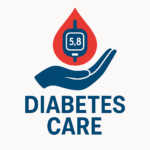Diabetes Diet
Glycemic Index & Glycemic Load
Low GI
Low GL
Smart Choices

Glucose Control
A1C control
Healthy Life
Glycemic Index
What is Glycemic Index (GI)?
Glycemic Index (GI) is a numerical scale (from 0 to 100) that ranks carbohydrate containing foods based on how quickly they raise blood glucose levels after eating.
- Low GI: 55 or less
- Medium GI: 56–69
- High GI: 70 or more
For example:
- White bread has a high GI (around 70+), meaning it spikes blood sugar quickly.
- Lentils have a low GI (around 30), meaning they raise blood sugar more slowly.
GI is particularly important for people with diabetes because foods that cause slower, steadier increases in blood glucose are easier to manage and reduce the risk of spikes and crashes. GI is measured by feeding people a test food with 50 grams of digestible carbohydrates and measuring how much their blood sugar increases over 2 hours compared to a reference food like glucose.
Glycemic Load
What is Glycemic Load (GL)?
While GI tells you how fast a carbohydrate turns into glucose, it doesn’t account for how much carbohydrate is in a serving. That’s where Glycemic Load (GL) comes in.
Glycemic Load = (GI × grams of carbohydrate per serving) ÷ 100
GL gives a more accurate picture of a food’s real life impact on blood sugar.
- Low GL: 10 or less
- Medium GL: 11–19
- High GL: 20 or more
Example:
A watermelon has a high GI (~72), but a standard serving has relatively little carbohydrate, resulting in a low GL (~4). So despite the high GI, watermelon won’t spike your blood sugar much in normal portions.
GL is calculated mathematically by multiplying the GI of the food by the amount of carbohydrate in a typical serving, then dividing by 100.
Insights
Leveraging GI & GL for diabetes managagement
Incorporating low GI and low GL foods into your diet can support better blood sugar control and reduce the risk of diabetes-related complications.
Benefits include:
- Fewer blood sugar spikes: Helps reduce insulin resistance and post meal glucose surges.
- Longer satiety: Slower digestion helps you feel full longer and supports weight management.
- Reduced A1C levels: Studies show diets focused on GI/GL can lower HbA1c, a long term marker of glucose control.
- Improved energy and focus: Avoiding sugar highs and crashes helps with daily functioning and mood stability.
Smart Choices for Low GI and Low GL Eating (Examples of low GI, low GL foods):
- Non starchy vegetables (broccoli, spinach)
- Legumes (chickpeas, lentils)
- Whole grains (quinoa, steel cut oats)
- Nuts and seeds
- Berries and apples
Tips:
- Combine carbs with protein and healthy fats to slow digestion.
- Choose whole foods over processed ones.
- Watch portion sizes, even low GI foods can have a high GL if eaten in excess.
Understanding the Glycemic Index and Glycemic Load can revolutionize how you approach food if you’re living with diabetes. By making intentional, informed choices about the types and quantities of carbohydrates you eat, you can take charge of your blood sugar, improve your energy, and reduce long term health risks. Start today by swapping out high GI carbs for lower GI, whole food alternatives.
Simple Glycemic Index GI Chart
The Glycemic Index (GI) is a ranking system that measures how quickly carbohydrate containing foods raise blood glucose levels after eating. Use the simple chart below to search you favorite foods to view GI ratings. Use the link below the chart to view a more detailed GI table.


